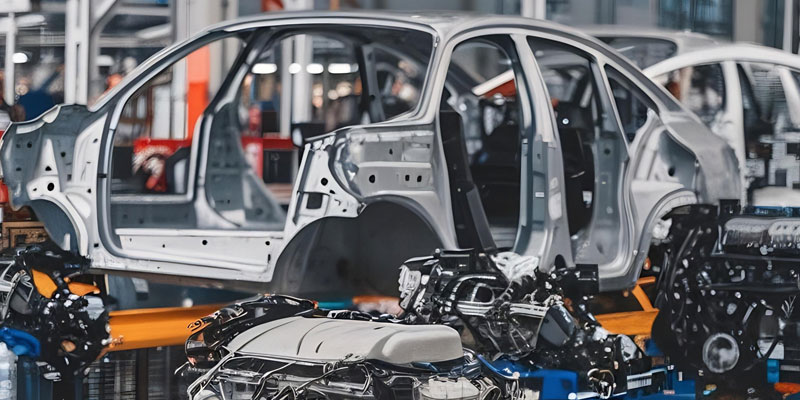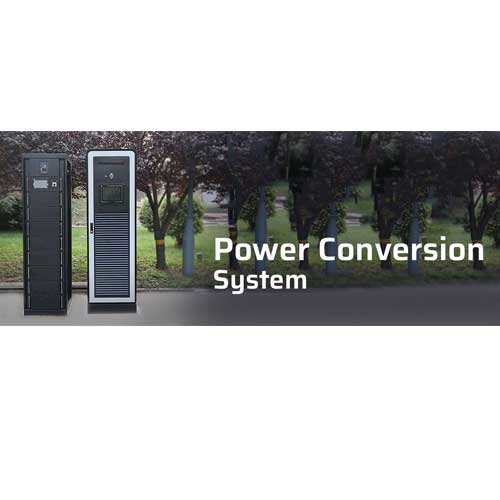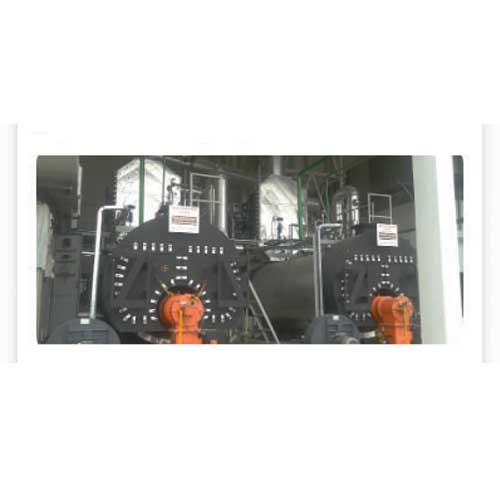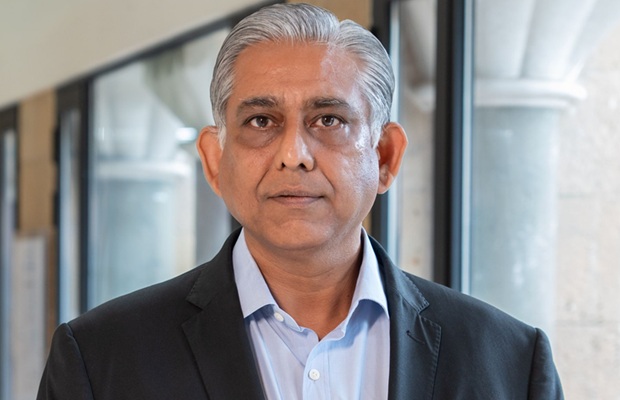Schedule a Call Back
Racing towards the next generation utility
 Articles
Articles- Jan 29,24

“The day when we shall know exactly what electricity is will chronicle an event probably greater, more important than any other recorded in the history of the human race. The time will come when the comfort, the very existence, perhaps, of man will depend upon that wonderful agent.” - Nikola Tesla.
One of the most critical issues facing the world today is the dual challenge, that of meeting the increasing demands for resources from a growing population with rising standards of living, while also addressing sustainability goals. Home to the largest population in the world, India is working towards 100 per cent electrification, while mitigating the dual challenge. The country aims to reach net-zero by 2070 with 50 per cent of its energy coming from renewable resources by 2030. This step towards sustainability is highly significant, as India is the fourth largest emitter of carbon dioxide globally.
A step in this direction was exemplified in 2022 with solar and wind contributing to 92 per cent of India’s power generation capacity increase.
What is changing?
Globally, for most of the last century, energy flowed in one direction. That from large, centrally located generators to homes, businesses and commercial industry through a grid managed and operated by generation, transmission and distribution utilities. With the grid getting denser, more complex, vibrant and dynamic – the integration of increased renewable energy requires increased flexibility and tools for grid management.
These utilities are tasked with providing reliable, safe power by ensuring generation supply balances to end-consumer load on a minute-by-minute, day-by-day basis. Generated, transmitted, distributed and consumed real-time, electricity is a commodity, which necessitates visibility and control real-time. This can be provided by automation tools, such as Supervisory Control and Data Acquisition (SCADA); Energy Management System (EMS); Advanced Distribution Management Systems (ADMS) and Distributed Energy Resource Management Systems (DERMS). A trend that is largely influenced by funding and implementation policies, the distribution sector tends to lag the transmission sector, in terms of the adoption of innovation.
While large generation plants still form the backbone of the system, operators must now account for bi-directional power flows and variable output from grid-scale renewable resources. Further complicating the picture is less predictable consumer demand due to the increased adoption of Distributed Energy Resources (DER), such as rooftop solar, energy storage, electric vehicles and in-home smart devices.
To manage DERs, many utilities have started to utilise DERMS. These enterprise-wide software solutions enable all utility stakeholders to monitor and intelligently control DERs.
Amidst the energy transition, DERMS allow utility operators to optimise their operations today by making better, more informed decisions. They can also maximise the value of their DER assets by delivering reliable power to consumers, but with DERMS, they can plan for the next-generation systems of the future.
Exponential growth of electrification
Since 2000, global demand for power increased by more than 70 per cent with a large part of that increase being fulfilled by renewable sources, like wind and solar, which represents nearly a third of all power generation.
Two of the largest factors behind the increase in demand are the growing number of industrial companies turning to electrification, as well as the adoption of Electric Vehicles (EVs). Globally, the International Energy Agency forecasts a 35 per cent increase in EV sales this year, or 20 per cent of all vehicle sales. It is forecasted that over 50 per cent of all vehicles sold will be EVs by 2030.
The critical point to note is that in many areas, the electric grid is already at capacity, so adding more power to the system could lead to brownouts or cause equipment breakdowns.
Towards net-zero emission goals
While it offers great promise for decarbonisation and helps the world meet net-zero emissions goals, the intermittent nature of renewable power creates a significant hurdle.
To understand how to integrate renewables into the grid, operators must be able to reliably forecast when and how much electricity they generate and what impact it will have on the grid. An additional challenge for incorporating renewable power into the grid is its lack of inertia, which plays a key role in dealing with breakdowns across the grid. The system must react much faster, so many operators rely on smart inverters to make sure renewable power enters the grid at the right frequency, and to curtail load, as conditions across the grid change.
As DERs become increasingly abundant, the demand of managing thousands of grid-connected devices and their impact on system operations is forcing many utility operators to consider a paradigm shift in how they do business. The traditional one-way road is being transformed into a two-way highway that carries not just electricity in both directions, but also a broad range of data from millions of DERs. Utilities need to engage consumers with new business models and programs to encourage adoption and optimal time-of-use of the many DERs available. Having visibility into what devices are connected to the grid, where they are located and how much power they are generating or consuming allows operators to make real-time decisions about how to balance load on the grid and optimise performance for customers. New regulations in India, the US and Europe are opening the door to a new class of prosumers (that is customers who produce, and then sell their own electricity).
Thriving in the energy transition
A key feature of any DERMS software is to give utility operators the ability to track, understand and even control the behavior of the thousands of DERs connected to the grid. Enterprise DERMS software systems allow operators to see, in real-time, what devices are connected to the grid, their location and how they impact load, making it far easier to balance the load and keep the power on. By enabling increased grid efficiency, DERMS also allow utilities to extend the life of existing equipment, resulting in significant savings in capital investments.
DERMS add value through the creation of virtual power plants and by enabling greater access to wholesale energy markets and encourage greater investment in DERs. DERMS also play an important role in making grids greener by allowing utilities to plan and manage more precisely how renewable energy is integrated into their systems. By providing an unprecedented level of visibility and predictability into DERs on the grid, DERMS software acts like the system’s brain, allowing operators to know exactly what devices are connected to the grid, how to use them and how to optimise their performance.
Utilities must find new ways to keep the power on for customers and manage thousands – or even millions – of devices, each of which has a different and specific impact on the health of the electrical grid, while planning for a more distributed, diverse future. DERMS software, along with SCADA and ADMS, offers a pathway to create significant new value for utilities through operational improvements, more efficient utilisation of existing assets and harnessing of DERs to create non-carbon emitting grid resources.
*https://www.bbc.com/news/world-asia-india-59125143
**https://ember-climate.org/insights/research/india-data-story-2023/
About the Author
Sally Jacquemin is the Vice President (VP) and General Manager (GM) for the power and utilities business at Aspen Technology, Inc. She is an industry professional with extensive experience in digital solutions for operational technology. Jacquemin has earned a BSE in Industrial and Operations Engineering from the University of Michigan and an MBA from the Tepper School of Business at Carnegie Mellon University./
Related Stories

EV transition and tariff wars redefine India’s auto components play
India’s auto component industry is poised to hit $ 145 billion by FY30 from $ 80 billion in FY25. Yet high US tariff, EV transition and heavy reliance on imports from China expose vulnerabilities,..
Read more
India EV Battery Demand to Surge 14-Fold by 2032: CES Report
CES says India’s EV battery demand may rise from 17.7 GWh in 2025 to 256.3 GWh by 2032, driven by electrification, new models, fuel prices and policy support shaping growth over next seven years t..
Read more
Mobec reshapes EV charging, battery reuse: Harry Bajaj
Mobec is redefining both how EV charging is delivered and how battery resources are reused, enabling a flexible and circular EV ecosystem.
Read moreRelated Products

Power Conversion Systems
POM Systems & Services Pvt Ltd offers a wide range of
PCS power conversion systems energy storage.

Hot Water Generators
Transparent Energy Systems Private Limited offers a wide range of Hot water generators - Aquawarm Superplus.

Scrap Baling Press
Fluid Power Machines offers hydraulic scrap baling press. Read more














